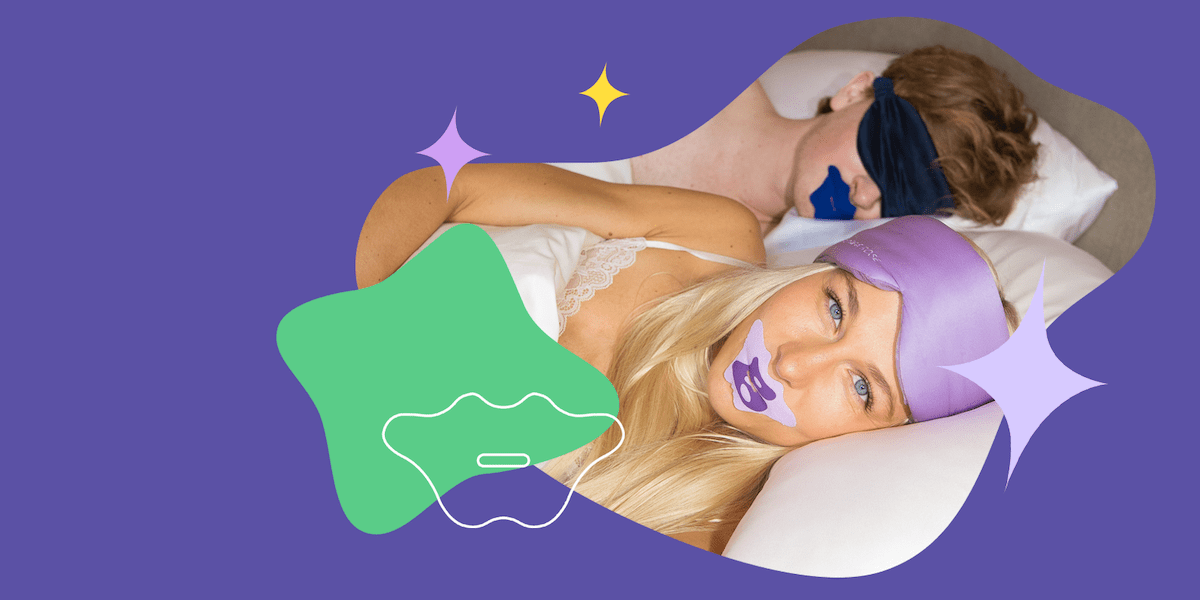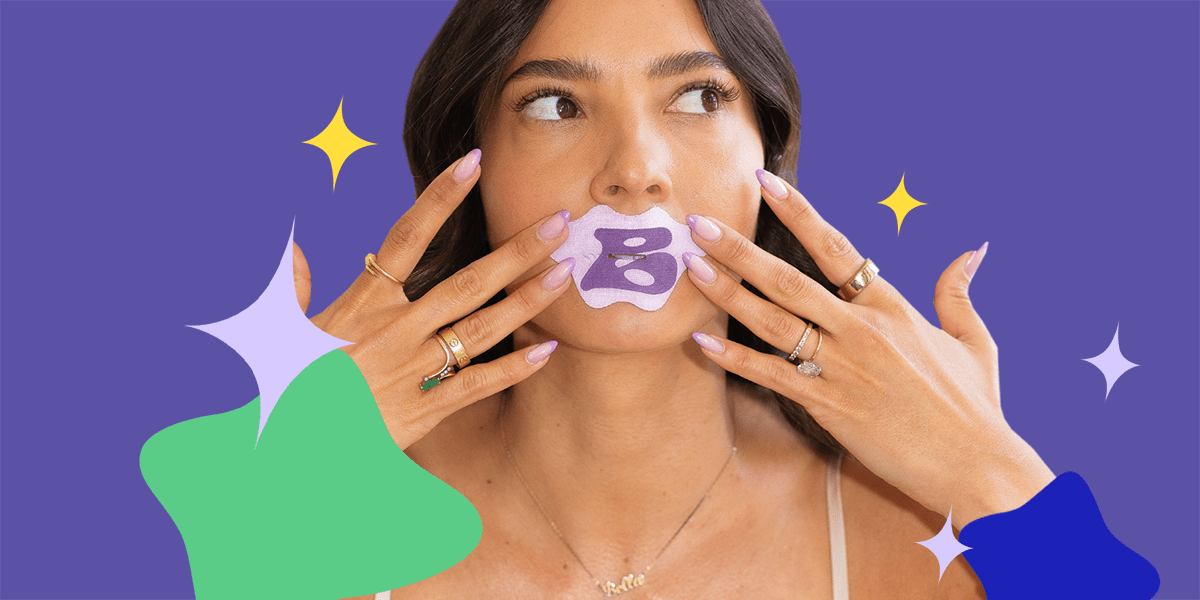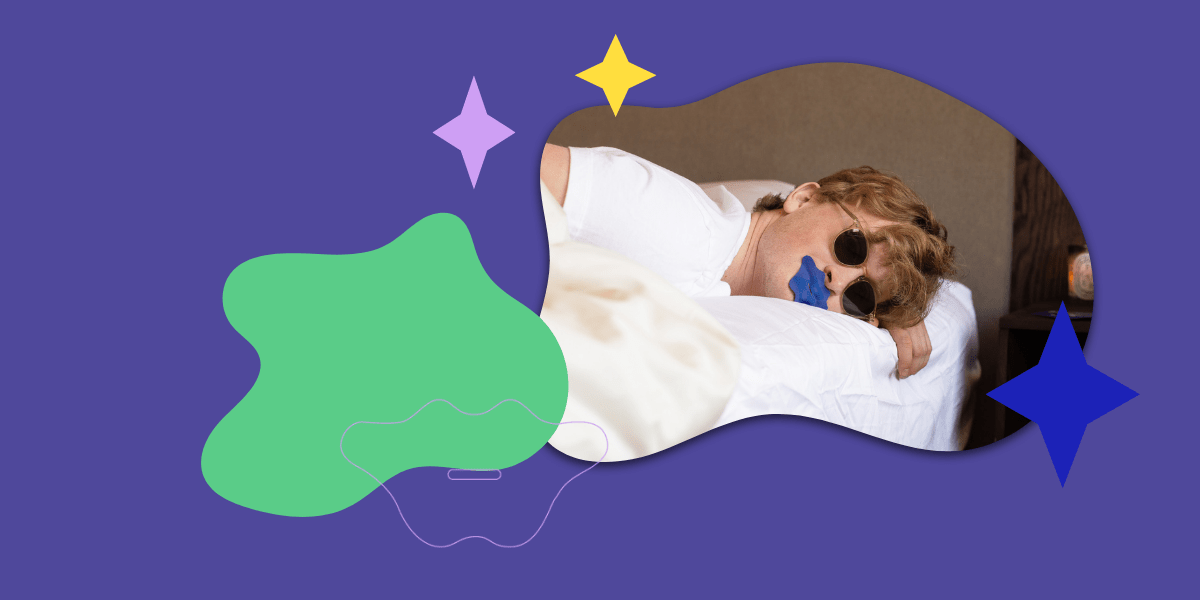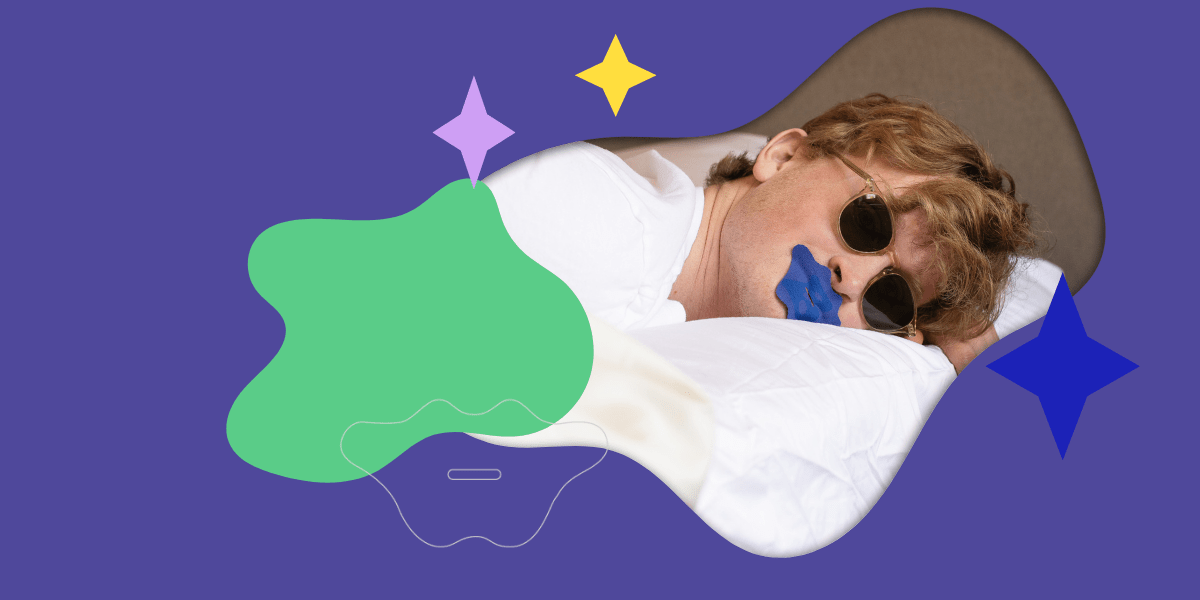Why should you use mouth tape for sleep and performance?

WHY SHOULD YOU USE MOUTH TAPE FOR SLEEP AND PERFORMANCE?
Too Lazy to Read? Here’s the Glowdown.
1. Nose breathing is the goal. It improves oxygen flow, lowers your heart rate, calms your nervous system, and helps you sleep deeper — all without needing to “do” anything extra.
2. Mouth taping is a tool to help you get there. It gently encourages nasal breathing while you sleep (or even train), helping your body get back to its most efficient state.
3. From deep sleep to elite workouts — athletes like Erling Haaland (Manchester City) use it at night, while Iga Świątek (World #2 tennis player) trains with it during sessions.
4. It’s not just for pros. Whether you want to feel more rested or perform better, taping can be a simple and powerful daily upgrade.
Intro: Wait… You Want Me to Tape My Mouth Shut?
Sounds extreme. Maybe even a little weird.
But stay with us — because mouth taping isn’t just some quirky biohacking trend. It’s a practical, science-backed tool that’s helping more people (from pro athletes to sleep-deprived parents) unlock better recovery and performance by doing one thing differently: breathing through their nose.
If you’ve ever woken up with a dry mouth, struggled to stay asleep, or felt gassed during your workouts — this might be the quiet fix you’ve been missing.
1. What Is Mouth Taping (And Why Do People Do It)?
Mouth taping involves placing a soft, skin-safe strip over your lips to encourage nose breathing — especially while sleeping. The tape doesn’t need to fully seal your mouth shut. Many people use a simple vertical strip or flexible design that lets them breathe or talk if needed. It’s about guidance, not restriction.
Most of us don’t realize how often we mouth breathe at night — even those who feel like they sleep “fine.” But chronic mouth breathing is linked to poor oxygen uptake, fragmented sleep, snoring, and reduced recovery.
Key idea: This isn’t about forcing anything. The tape acts more like a reminder — helping you breathe better, naturally.
2. Sleep Deeper, Recover Harder
The real magic of mouth taping? It kicks in while you’re unconscious.
By stimulating nose breathing throughout the night, it helps your body shift into true recovery mode. That means better rest, deeper sleep stages, and more energy the next day.
Here’s what science (and sleepers) are noticing:
- Fewer wakeups + reduced snoring: Nasal breathing keeps your airways more stable and supported.
- Improved oxygen balance: Nose breathing improves carbon dioxide tolerance, which helps your body deliver oxygen more efficiently. Translation: You’ll last longer in workouts, feel calmer under stress, and need fewer deep breaths during sleep.
- Lower resting heart rate (RHR) and cortisol: Your nervous system gets a reset. This helps you wake up calmer, not groggy.
A 2022 study in *Healthcare* found that people with mild sleep apnea who used mouth tape experienced improved oxygen levels and less snoring — within just one week.
That’s why athletes like Erling Haaland (Manchester City striker) tape their mouths at night to support recovery and energy — even during packed match weeks.
3. It’s Not Just for Sleep: Train Like Świątek
World #2 tennis player Iga Świątek wears mouth tape while training.
Photo: Patrice Lapointe/Tennis Canada
Why? To force her body to breathe through her nose — even under physical stress.
This kind of intentional training strengthens the diaphragm, sharpens focus, and improves endurance by making the body more efficient with less oxygen. It’s not about pushing harder — it’s about breathing smarter.
And no, you don’t have to be a professional athlete to try it. Even a brisk walk or light cardio with your mouth taped can help build the same internal awareness and breath control.
4. Who It’s For — And Who It’s Not
Mouth taping might be a fit if you…
😴 Wake up with a dry mouth or sore jaw
🥱 Feel groggy despite 7–8 hours of sleep
😮💨 Breathe through your mouth while walking or working
💤 Snore lightly or toss and turn a lot at night
💪 Want to improve breath control and endurance during workouts
But it’s not for everyone.
If you struggle with nasal congestion, have a deviated septum, or experience anxiety about taping, it’s best to wait — or consult a medical professional first. Mouth taping also isn’t advised for kids or those with moderate to severe sleep apnea unless cleared by a doctor.
5. How to Start (Without Overthinking It)
Getting started is simple — and not every tape is created equal. Choose a mouth tape that’s soft, flexible, skin-safe, and designed for sleep. Avoid anything too sticky or harsh (you shouldn’t have to rip it off in the morning).
Here’s how to ease in:
Step 1: Start during the day.
Try taping for 10–15 minutes while reading, stretching, or relaxing. This helps you get used to the sensation without pressure.
Step 2: Use a gentle design.
You don’t need to seal your lips shut. A vertical strip, breathable shape, or tape with a small hole (so you can still sip water) can help beginners feel more comfortable and in control.
Step 3: Try it overnight.
Once it feels familiar, try a full night. If the tape comes off, no stress. Your body will adjust over time.
✨ Bedrock Tips & Tricks
A few small adjustments can make a big difference in how comfortable — and effective — your mouth taping practice feels.
DO:
- Choose the tape that works for you: Look for a design that feels breathable and safe. Some tapes include a small opening to make sipping or speaking easier, which can help ease into the habit.
- Wait after skincare: If you’ve used rich balms or oils, wait 5–10 minutes before applying tape so it stays put.
- Trim or reposition for facial hair: If you have a beard, apply over trimmed areas for better adhesion.
- Peel gently: Always remove tape slowly to avoid skin irritation, especially if you tape nightly.
DON’T:
- Overdo it: Don’t tape over broken, chapped, or irritated skin.
- Tape in a rush: Let your skin dry fully after washing or moisturizing before applying.
- Ignore your comfort: If something feels off, remove the tape and try again when you’re more relaxed.
🧠 Resource Library: The Science + Stories Behind Mouth Taping
Want to learn more or hear it from the experts? Here are a few great places to start:
🎧 Podcasts
- The Huberman Lab: Breathing & nervous system regulation
- The Mel Robbins Podcast: Interview with James Nestor on breathwork
- The Rich Roll Podcast: “Breathwork is the New Sleep Pill” with Patrick McKeown
📚 Books
- Breath by James Nestor
- The Oxygen Advantage by Patrick McKeown
- Why We Sleep by Matthew Walker
Your Takeaway
Mouth taping might seem like a strange trend — until you try it and wake up actually rested. Until your workouts feel more efficient. Until your brain feels a little clearer.
It’s not about being extreme. It’s about nudging your body back to how it was designed to work — and letting the benefits unfold naturally.
Whether you’re a pro on the pitch, a weekend warrior, or just someone who’s tired of being tired — mouth taping might be your new secret weapon. Ever tried mouth taping — or been curious but hesitant?👇 Drop your questions or share your experience — we’re here for it.





Comments
Asia —
I didnt know mouth taping is so powetful, need to try!